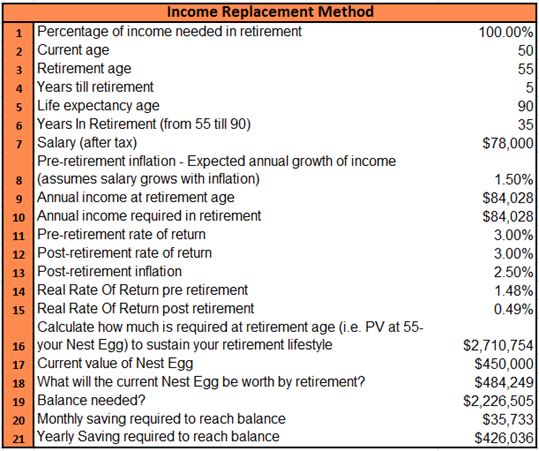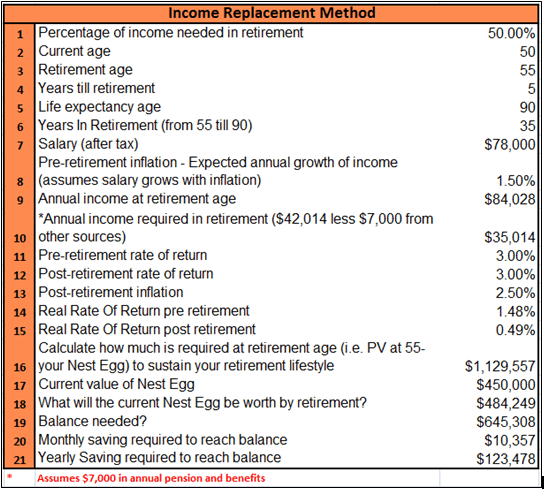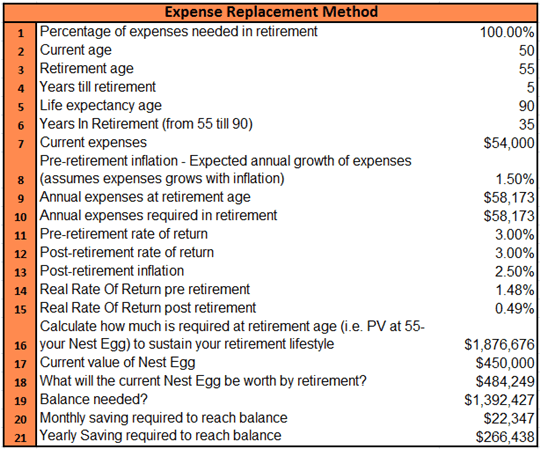At What Age Can You Retire? Here is an Overview of How Soon You Can Retire
To find out what age you can retire at requires a deep understanding of your post-retirement goals and objectives.
It also means that, before you “pull the trigger” on a retirement decision, you need to know where you stand financially and what major changes (or developments) are expected in your financial situation between now and your planned retirement date.
Danger: Proceed with caution!
If you find yourself asking “What age can I retire at?” more frequently of late, you’ve likely reached a point where your job isn’t very exciting anymore. The fact that you are eager to find out when can you retire, and what will it take to make that happen, is a sure sign that it’s time to hang up your gloves and jump out of the ring.



Image Source: BigStock
Retirement planners, however, caution anyone asking them “At what age can I retire?” to proceed carefully. The decision to retire marks a watershed moment in your life, marking the end of one particular lifestyle and the beginning of another.
And planning for that “other” lifestyle requires a great degree of thought and foresight. A lack of diligence on your part could make the difference between a happy retirement and a miserable one!
See Also: Can I Retire Now? Find Out If You Can Afford to Retire Now
Two schools of thought
While the exact approaches used may be different, there are two general ways of determining at what age you can retire, and retirement planners are split equally between these methods.
Income replacement method: This approach to determining retirement readiness uses a person’s income to determine whether they can retire. The fundamental assumption of this approach is that to retire comfortably, and live the retirement lifestyle of your choice, requires a certain level of income.
To answer the question “At what age can you retire?” rather than making wild guesses about income, retirement planners try to ascertain an optimum percentage of your current income that will meet your retirement needs. In other words, this approach to retirement planning seeks to answer the question:
“In retirement, how much of my current income will I need to sustain my retirement lifestyle?”
Expense replacement method: When answering the question “What age can I retire at?” some financial planners will use your current spending levels as a yardstick to determine an answer. The assumption of this approach is that, in order to live in retirement, you need to spend. So, in determining when you can retire, the amount of spending needed in retirement is considered.
Regardless of how much you are currently earning, or what your retirement income is likely to be, the basis of this second approach is to ask:
“How much will I spend (annually) to fund my retirement lifestyle?”



Image Source: BigStock
All-in-One Change Management Tools
Top Rated Toolkit for Change Managers.
Get Your Change Management Tool Today...
No right answer
Before we take a closer look at each of these approaches, let’s be clear about them: There is no right answer, and neither of them is incorrect. Since both approaches will give you a “general” idea, either of them could be used as a starting point for your retirement planning purposes.
The differences to be aware of, however, are that:
- In one case (Income Replacement) you need to be fairly certain how much you will continue to “earn” during retirement (pensions, Social Security, dividends, interest, annuity receipts, etc.).
- In the other case (Expense Replacement), you need to have an accurate idea of what you will be spending to sustain your chosen retirement lifestyle.
So, at what age can you retire? To determine the right answer, you’ll need to either ask yourself how much you’ll earn in retirement or how much you’ll spend. It’s really that simple!
Don’t Miss: How Much Should You Have Saved for Retirement by 30, 40, 50, or 60?
The building blocks
First, let’s take a closer look at some of the theory that affects your retirement plans. There are four basic Excel functions you need to understand and, without getting too “actuarial,” here’s a summary of what these entail:
- The Real Rate of Return: To answer the question “At what age can I retire?” there are two important yet opposing forces. Rates of return, which have a positive impact on your savings, and inflation, which negatively affects how savings grow. To forecast exactly how large a nest egg you need to retire at certain age, you need to be realistic about your return expectations and use the Real Rate of Return (adjusting rates of return by inflation).
- Future Value (FV): When figuring out how large your nest egg will grow by the time you retire, use the Future Value (FV) function in Excel. FV predicts the value a given sum will grow to, given a specified period and rates of return.
- Payment (PMT): Excel’s PMT function calculates the periodic sums of money you need to save in order for you to reach a specific savings target.
- Present Value (PV): This function helps us determine what the value of your nest egg should be today (in the present), to enable you to draw a set number of fixed sum payments over a specified future timeframe.
These are the fundamental building block calculations used in determining the answer to your question “How soon can I retire?” However, to work correctly, these Excel functions need certain inputs, which you can get by asking yourself the following questions:
- What is my current age?
- At what age do I want to retire? Can I retire at 50, or 60, or 65?
- How long can I reasonably expect to live?
- What is my current after-tax salary?
- Do I expect my income to grow with inflation? If so, by what percentage?
- What percentage of my income do I reasonably need to replace in retirement?
- What rates of return can I expect on my investments prior to and in retirement?
- What rates of inflation can I expect prior to and in retirement?
- How much am I currently spending to live on?
- Can I afford to retire with that same level of spending, or do I need to reduce my expenses in retirement? If so, by how much?
By using Microsoft Excel and leveraging the four functions and inputs discussed above, you can start to build your retirement planning model based on the Income Replacement and the Expense Replacement methods.
Related: Do I Have Enough to Retire? Find out If You Have Enough Money for Retirement



Income Replacement method
So, at what age can you retire? Let’s figure that out with the help of the Income Replacement computational model.
In the table below, we’ve plugged in some assumed responses to the questions we asked you earlier about your own financial situation. Let’s see what our model reveals about a 50-year old, earning $78,000 (after tax), who has already managed to save $450,000, and is looking to retire at 55 (in five years’ time).
Our hypothetical subject believes they need to replace 100% of their pre-retirement income (which will have ballooned to approximately $84,000 in five years due to inflation adjustments) to support their retirement lifestyle.
Now, when they plug the numbers into the calculation model, they will know: “Can I afford to retire at 55?”



Image Source: AdvisoryHQ
If we take a look at row 16 of the above figure, we see that, in order to live for 35 years in retirement, the subject requires a nest egg of $2,710,754. We’ve used the PV function to determine the nest egg required to generate the necessary annual income required in retirement (row 10).
Given that the current nest egg (row 17) will have only grown marginally (row 18) in the five years left prior to retirement, the retiree needs to accumulate $2,226,505 more (row 19) to fulfil their retirement ambitions.
To help them figure out the answer to the question “What year can I retire?” we’ll need to use the PMT function to determine if they can bridge the savings gap by age 55. If they can save $35,733 (row 20) every month, or $426,036 (row 21) annually, from now till the year they retire (inclusive), then the answer to that question will likely be “2021” (assuming this is 2016). Given their monthly income is nowhere near $35k, this individual will likely not be ready to retire in five years, unless other sources can be leveraged to bridge the income gap (e.g. government benefits or private pension entitlements).
At what age can you retire if this were your particular scenario, but if you only needed 80% of the income required by our test subject? A lesser income requirement reduces the monthly savings target to $27,000. Accelerating your monthly savings accelerates how early you can consider retiring.
Now let’s assume you expect to receive $7,000 in government benefits and private pension plan payments annually. If we are to go by what some conservative retirement planning experts believe, that you only need 50% of your pre-retirement income to live in retirement, then Freedom-55 looks more attainable for our hypothetical future retiree.



Image Source: AdvisoryHQ
Now, instead of replacing $84K of income during retirement, you only need 50% of that–$42K; and $7,000 of that amount is “guaranteed” through other sources (pensions and benefits). That leaves you to bridge only $10,357 a month, as opposed to $35,733 from our earlier scenario.
Popular Article: Do I Have Enough to Retire? Find out If You Have Enough Money for Retirement
Expense Replacement method
In some instances, especially if you are unsure about how much income you might receive in retirement, it might be best to plan your retirement based on how much of your pre-retirement expenditure you need to support you.
If you are asking yourself, “Can a person retire if he or she needs 100%, 80%, or 65% of their current expenditure to live on?” then the Expense Replacement method is the perfect approach to address that question.
So, when can you retire if you have a pretty good idea of what your retirement lifestyle will cost you?
Assuming everything else in the previous Income Replacement scenario holds true, except that our hypothetical test subject expected to live on 100% of their current expenditure (row 7: $54,000) in retirement. Here’s what happens:



Image Source: AdvisoryHQ
Using the FV function, we determine that in five years’ time, at age 55, the expenses will balloon to $58,173 a year (row 9) – thanks to inflation.
The next step in answering the “At what age can I retire?” question is to figure out how much you need to save by the time you turn 55 (your planned retirement age), in order to generate the desired retirement expenditure (through dividends, interest, annuity receipts etc.).
The question to ask is “What should the value of my nest egg be at age 55 to allow me to spend the annual expenses required in retirement?” (See row 10 – $58,173.) We do that using the PV function. The answer is $1,876,676 (row 16).
But your current $450,000 nest egg (row 17) will have grown to $484,249 (row 18) by then, which leaves you with a shortfall of $1,392,427 (row 19) to generate.
So, are you wondering “Can I afford to retire at 55, and still maintain my existing lifestyle?” The answer? It would depend on whether you can manage to bridge the gap in your nest egg by the time you turn 55.
And the amount you need to save regularly, to build that bridge in the time available to you, is calculated using the PMT function. If you saved $22,347 (row 20) a month (or $266,438 annually) for the next 5 years, you could retire at 55.
Using this same model, we estimate that you could save $16,323 each month over 5 years to reach your retirement goal–IF you reduced your retirement expenditures to 80% ($46,539). IF that were possible, and IF you continued to save per your existing plan ($22,347 a month), you could probably retire before you turn 55.









Reality check
Given that your annual income is approximately 78K, and your current lifestyle expenditure amounts to approximately 54K annually, you only have roughly 24K of discretionary cash flow available to you each year. Regardless of whether you use the Income Replacement or Expense Replacement model discussed above, a reality check is in order.



Image Source: BigStock
In attempting to answer the question “How soon can I retire?” here are some additional questions that the above analysis raises:
- Do you have some other sources of income (separate from employment income used in these models) to bridge the retirement income gap – government benefits, social security entitlements, private pension plan payments, annuities?
- Are you able to drastically reduce current and retirement lifestyle spending in order to save more and spend less, both pre- and post-retirement?
- Do you need to invest in riskier assets in order to boost your nest egg?
- Should you consider delaying your retirement until you have accumulated a much larger nest egg?
Once you factor these additional elements of retirement planning, you may get a clearer answer to your question, “Can I afford to retire?”
Read More: Ways You Can Retire Early (Detailed Early Retirement Planning Guide)
Cautions and disclaimers
The two approaches discussed above can help give you a high-level answer to the question “what age can I retire?” However, the concepts discussed here are generic in nature, and may not fully apply to your individual financial situation. You still need to run these scenarios by a qualified financial planner.
The theories highlighted here, however, will give you a head start for that meeting.
AdvisoryHQ (AHQ) Disclaimer:
Reasonable efforts have been made by AdvisoryHQ to present accurate information, however all info is presented without warranty. Review AdvisoryHQ’s Terms for details. Also review each firm’s site for the most updated data, rates and info.
Note: Firms and products, including the one(s) reviewed above, may be AdvisoryHQ's affiliates. Click to view AdvisoryHQ's advertiser disclosures.



